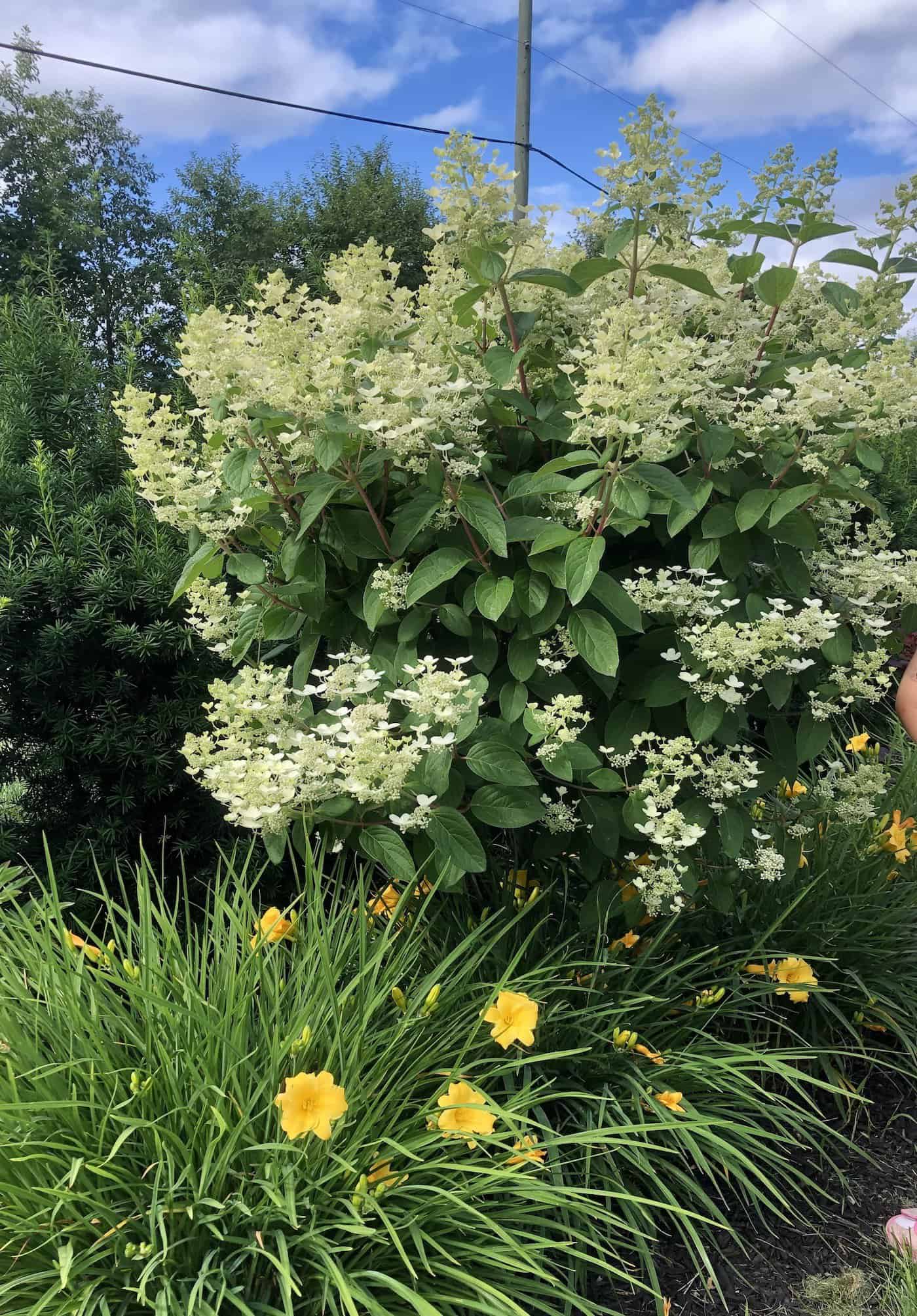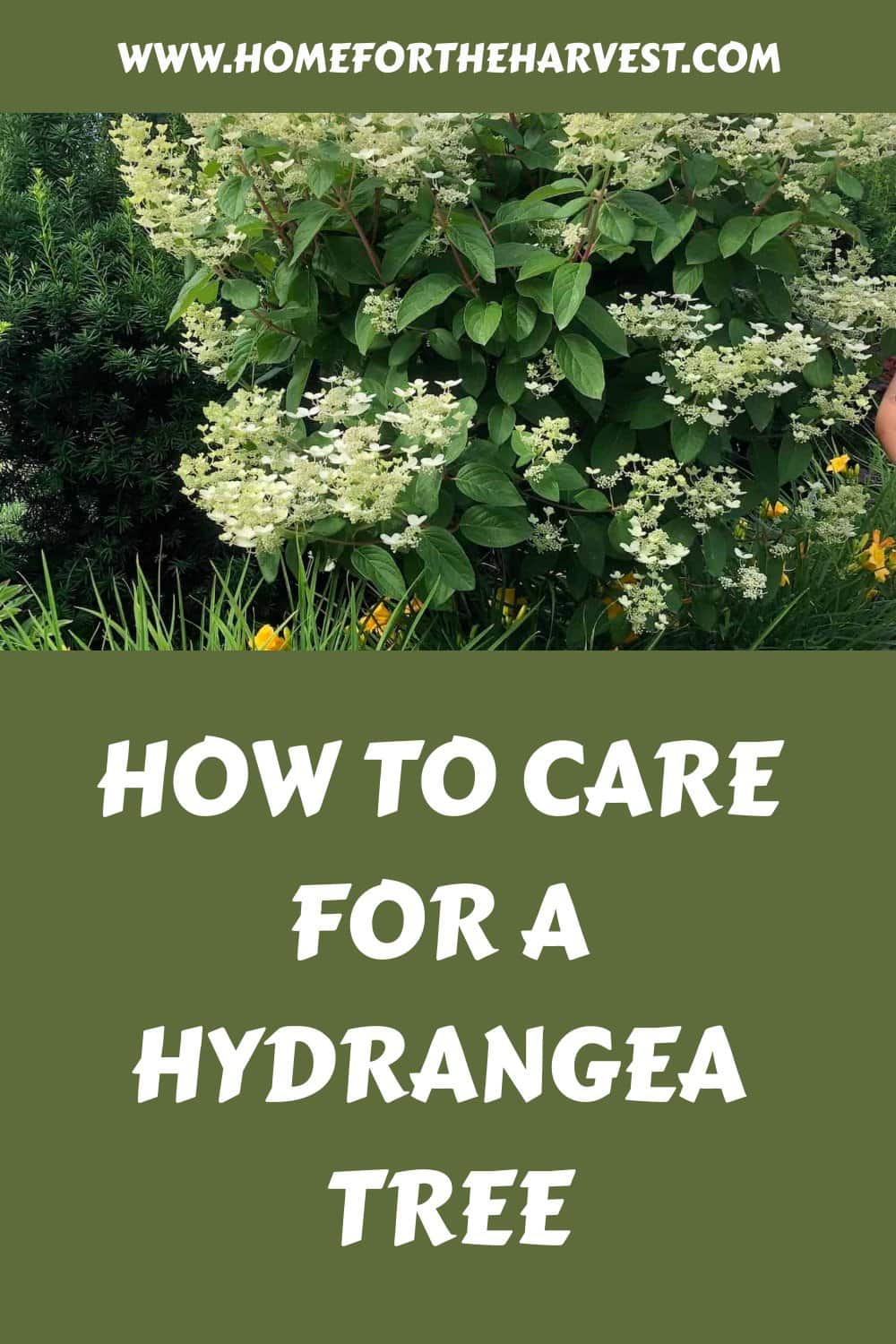Hydrangea trees tend to grow best when the leaves are receiving at least 6-8 hours of sunlight per day, ideally in the morning. Water them regularly during dry spells, letting the soil dry out a bit between deep waterings. You can deadhead the flowers in the fall if you wish, but save the significant annual pruning until early spring. Spring is also a great time to fertilize the tree and refresh the organic mulch around the base.
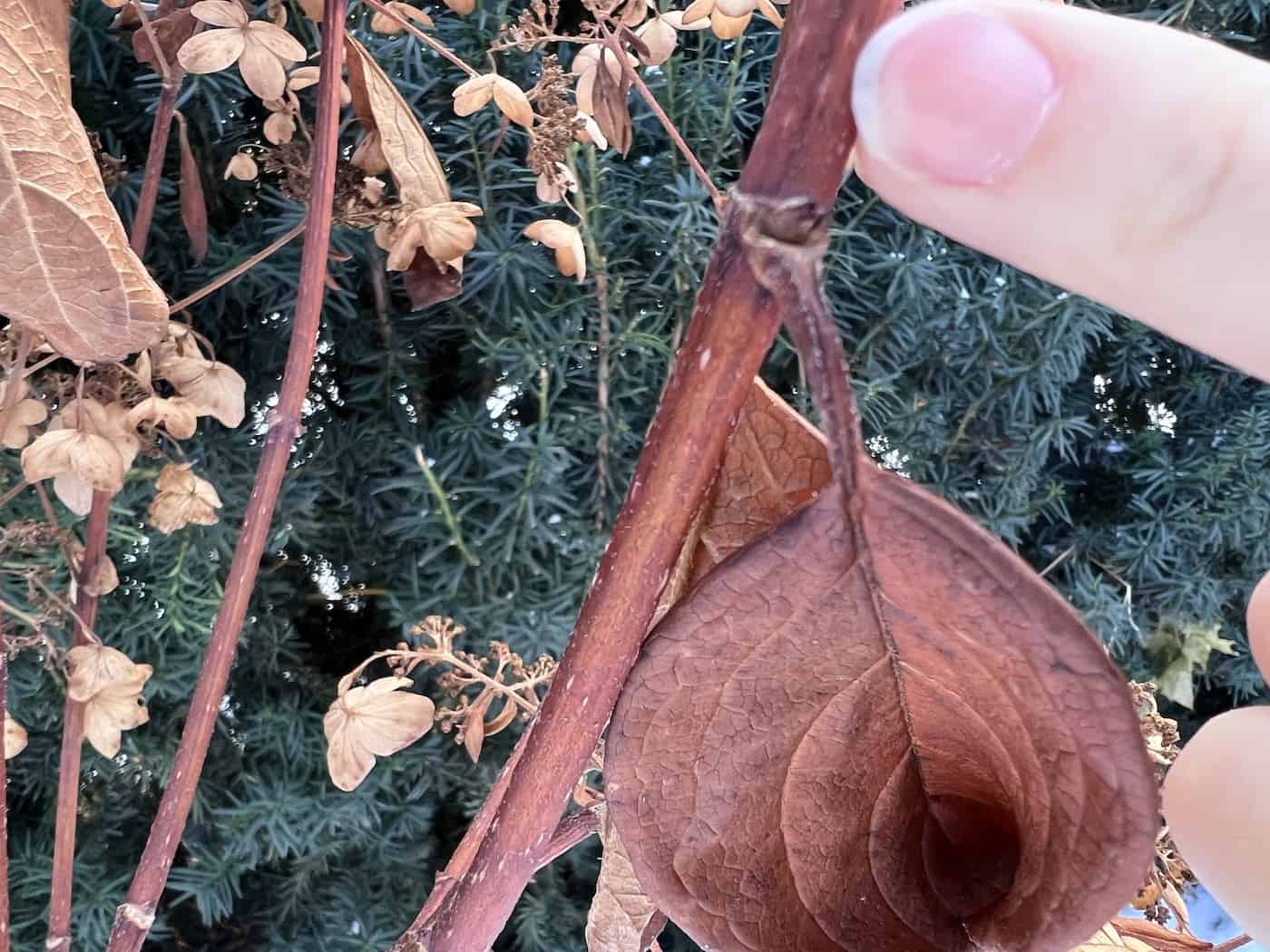
Pruning standard hydrangeas
Keeping your hydrangea tree well-pruned is an important part of maintaining its health. The main goal is to create a healthier, stronger plant. The process of pruning hydrangeas involves cutting out crossing branches, getting rid of dead/diseased branches, and sometimes cutting back the overall branch framework. This will also make your hydrangea bush look more like an upright tree.
Most hydrangea trees are panicle hydrangea cultivars and have white flower clusters that appear in spring. During the fall, the leaves turn yellow. It is best grown in well-drained soil with plenty of water. It is also recommended to use a slow-release fertilizer to help new plants get off to a good start.
Hydrangeas with rounded canopies can be pruned back to one-third of the total starting canopy size. The end result is a hydrangea that is a strong and dependable plant. It requires little or no maintenance, but it can be a very beautiful addition to your garden.
Fertilizing hydrangeas
Whether you are fertilizing hydrangea trees or shrubs, you want to choose a fertilizer that won’t burn the roots. The best way to do this is to use a slow-release organic fertilizer. Spring is the most common time to apply fertilizer.
There are many options to choose from when it comes to choosing a fertilizer for your hydrangea trees. There are synthetic fertilizers, liquid fertilizers, and even easy-to-apply organic granules. Depending on your climate and soil, you may need to fertilize your hydrangeas once or twice a year.
The best fertilizer for hydrangeas is one that contains all of the nutrients your plant needs. This includes nitrogen, phosphorus, and potassium. Using fertilizer with a high percentage of these minerals will increase the size of your hydrangea blooms. A balanced fertilizer will give your plant what it needs for healthy growth.
If you don’t want to invest in a packaged fertilizer, you can fertilize your hydrangeas with composted manure or homemade yard waste compost. These are all-natural sources of nitrogen, phosphorus, and other important minerals.
If you are going to buy a liquid fertilizer, make sure to water the fertilizer into the soil very well. This helps the fertilizer soak into the root zone. The liquid form of the fertilizer can usually be applied directly to the soil around the plant.
The best way to determine the correct fertilizer for your hydrangea is to read the label. The label should explain the proper way to use the fertilizer. For instance, many fertilizers suggest watering your plant after you have applied the fertilizer.
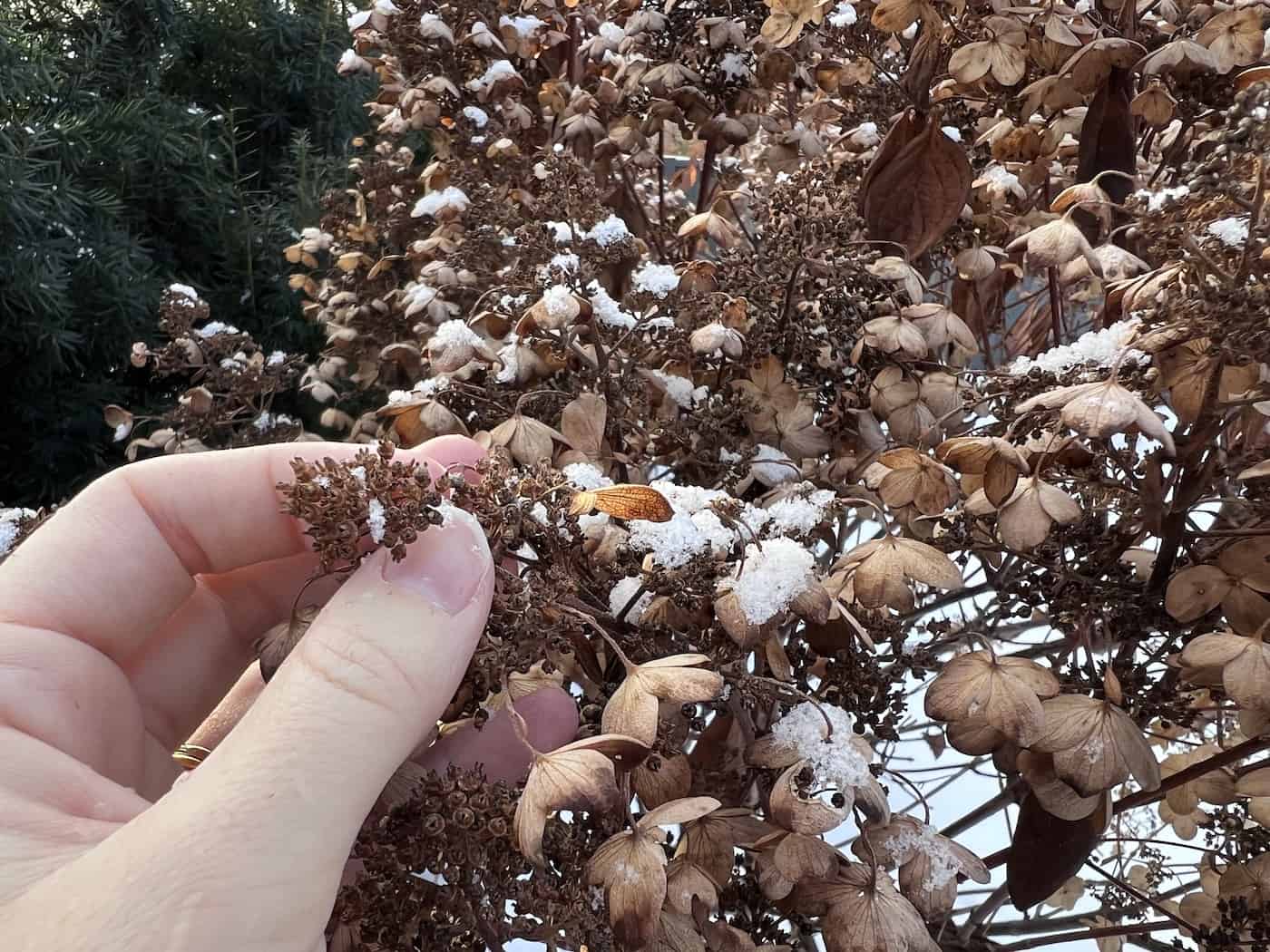
Deadheading hydrangeas
Deadheading is a good idea to maintain your plant’s health and aesthetic. While it may sound like a pain to remove spent flowers, it’s a simple process that will make your hydrangeas look spiffy and boost their blooms for the next season. It can also help minimize winter damage from wind and snow in colder regions.
When you’re deadheading your hydrangea, it’s best to do it well before the first frost. You can also just leave the flowers standing for some winter interest in the garden.
When you’re deadheading, you should also clean your tools. Carrying a wide jar with some Lysol disinfecting liquid in it can be one of the easier ways to do this. This will help disinfect your tools, which will help to reduce the chance of spreading bacteria and fungal disease.
When you’re done deadheading your hydrangea, you can save the best of the dried flowers and keep them for winter interest. The dried flower heads will last for the next season and will give your plant a nice winter show. You can even tuck them into a winter wreath!
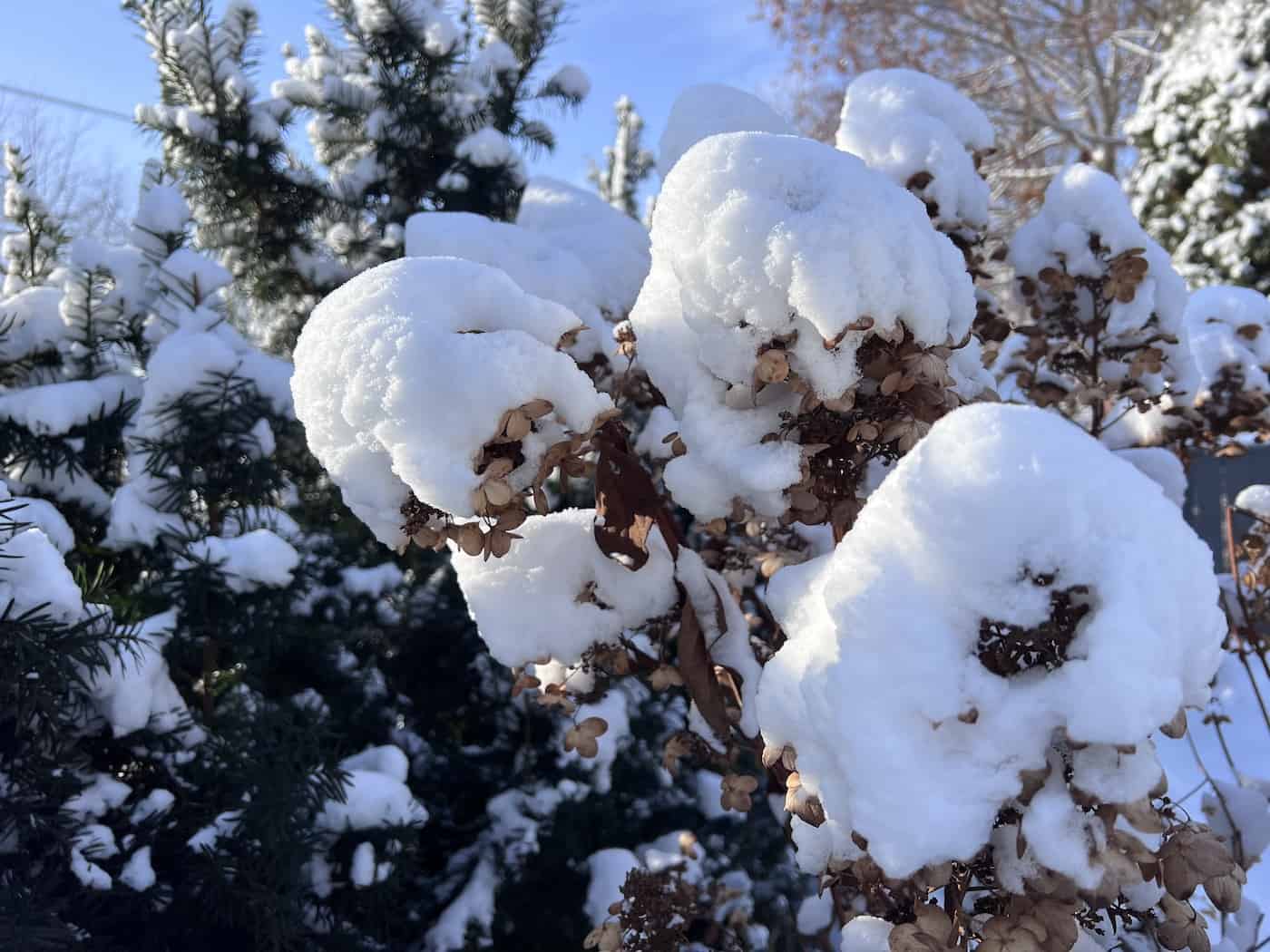
Protecting tree form hydrangeas from deer
Whether you live in a neighborhood with a large deer population or are just extra protective of the hydrangeas in your garden, it’s important to protect these plants from damage. There are several ways to keep deer from consuming your hydrangeas, including spraying deer repellent on the leaves. Using a spray is easy, but you must do it repeatedly, so make sure to read the instructions carefully.
Another way to keep deer from nibbling on your hydrangeas is to plant other plants around it. You can keep deer away by planting spikes or pungent foliage.
During the fall and winter, when food is scarce, you may notice that your hydrangeas are being nibbled on. The damage can be noticeable by shredding or broken leaves, but it might not affect the next season’s show.
If you live in an area with a large deer population, you should consider installing a fence. You can purchase cheap wire fencing from your local hardware store and cover it with branches or leaves. You can also wrap the hydrangea with burlap in the cooler months to prevent it from being nibbled on by hungry deer.
During the spring and summer months, you can apply a deer-repellent spray to the leaves of your hydrangeas. These sprays typically contain a variety of smells, such as garlic, wintergreen oil, and putrified eggs. These sprays are effective in hot and sunny weather, but they will need to be sprayed every two weeks or so. You can buy them at your local garden center or online. You can also use a homemade version.
